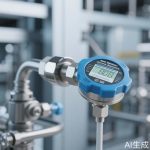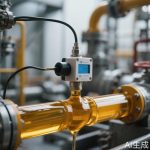In the complex landscape of industrial operations and environmental protection, ammonia gas sensors have emerged as critical components for ensuring safety, compliance, and operational efficiency. These sophisticated devices continuously monitor ammonia concentrations, providing early warnings that help prevent accidents, protect workers, and minimize environmental impact. As industries worldwide face increasing regulatory pressure and heightened safety expectations, the role of advanced ammonia detection technology has never been more vital.
Ammonia (NH3), a colorless gas with a characteristic pungent odor, presents significant health hazards at elevated concentrations. Exposure can cause respiratory irritation, chemical burns, and in severe cases, fatal pulmonary edema. Beyond immediate health concerns, ammonia contributes to environmental issues including atmospheric pollution and ecosystem disruption when released uncontrolled. These factors make reliable ammonia detection not just advisable but essential across numerous sectors including refrigeration, agriculture, chemical manufacturing, and wastewater treatment.
Modern ammonia gas sensors employ various detection principles, each with distinct advantages for different applications. Electrochemical sensors offer excellent sensitivity and are ideal for personal protection devices, while photoacoustic infrared sensors provide exceptional specificity and stability for fixed installation in harsh environments. Semiconductor sensors deliver cost-effective solutions for less critical applications, and cutting-edge laser-based technologies enable parts-per-billion detection levels for the most demanding scientific and industrial requirements.
The evolution of ammonia sensing technology represents a remarkable journey of innovation. Early detection methods relied on human olfactory recognition—an approach both unreliable and dangerous. Today’s digital sensors incorporate smart features including Bluetooth connectivity, data logging capabilities, and automated calibration routines. These advancements have transformed ammonia monitoring from a periodic manual check to a continuous, intelligent process that integrates seamlessly with building management and industrial control systems.
Industrial applications demonstrate the critical importance of reliable ammonia detection. In refrigeration facilities using ammonia as a natural refrigerant, sensors provide continuous monitoring of potential leaks from pipes, valves, and compressors. Agricultural operations, particularly large-scale animal confinement facilities, deploy sensors to monitor air quality and ensure proper ventilation. Chemical plants utilizing ammonia in manufacturing processes depend on sensors to protect workers and prevent potentially catastrophic incidents.
Beyond traditional industrial settings, ammonia sensors are finding new applications in emerging fields. In medical diagnostics, breath ammonia detection shows promise for non-invasive monitoring of liver and kidney function. Environmental scientists employ portable sensors to track atmospheric ammonia levels and study its role in particulate formation. Even the food industry utilizes ammonia detection to monitor food freshness and quality control during storage and transportation.
Selecting the appropriate ammonia sensor requires careful consideration of multiple factors. Detection range must match potential concentration levels, with some applications requiring parts-per-million sensitivity while others need percent-level measurement. Environmental conditions such as temperature, humidity, and potential cross-interferences must be evaluated. Operational requirements including calibration frequency, expected sensor lifespan, and maintenance needs significantly impact total cost of ownership and system reliability.
The future of ammonia sensing technology points toward increasingly intelligent, connected, and miniaturized solutions. Researchers are developing nanotechnology-based sensors with dramatically improved sensitivity and response times. Wireless sensor networks enable comprehensive area monitoring without extensive wiring installations. Integration with IoT platforms allows for predictive analytics, using historical data to anticipate maintenance needs and potential failure points before they become critical issues.
Regulatory frameworks worldwide continue to evolve, driving advancements in ammonia detection technology. Organizations such as OSHA in the United States and similar agencies globally have established exposure limits and monitoring requirements that push technological innovation. Compliance with these standards not only avoids potential penalties but demonstrates corporate responsibility toward worker safety and environmental stewardship—increasingly important factors in public perception and market competitiveness.
As technology advances, the humble ammonia gas sensor has transformed from a simple safety device into a sophisticated data collection point within broader operational systems. The integration of real-time monitoring data with process control systems enables automated responses to detected ammonia levels, such as activating ventilation systems or shutting down processes. This evolution represents a fundamental shift from detection to prevention—potentially stopping incidents before they occur rather than simply responding to them.
In conclusion, ammonia gas sensors stand as indispensable guardians of safety and environmental protection across numerous industries. Their continuous development reflects our growing understanding of risk management and our commitment to creating safer working environments while minimizing ecological impact. As technology progresses, these devices will undoubtedly become even more integrated, intelligent, and essential components of modern industrial operations and environmental monitoring systems worldwide.




Leave a Message